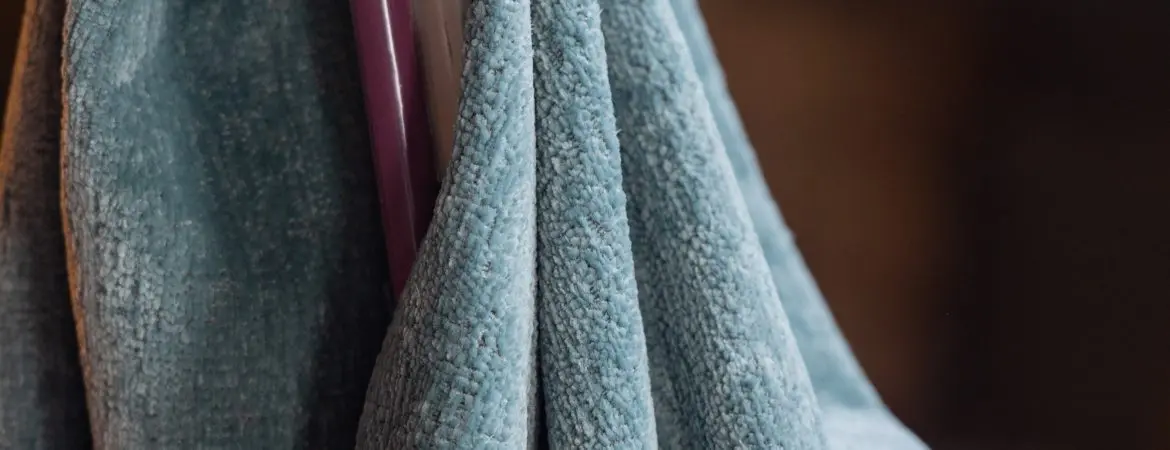
Suitability of RPET for the furniture industry
Use of recycled polyethylene terephthalate in the furniture industry has proven to be a reliable and sustainable choice. Various factors contribute to the suitability of RPET for various applications in furniture fabrics, and these aspects are important for both producers and consumers striving for a greener and environmentally conscious approach to furniture design. Here are some reasons why RPET is particularly significant for the furniture industry:
Circularity and waste reduction through RPET
RPET aligns with the circular economy model by utilizing recycled plastic waste, such as soda bottles, giving this material a second life as high-quality furniture fabrics. This reduces the demand for virgin polyester, directly contributing to waste reduction and closing the material loop.
Lower ecological footprint in production processes
The production process generally requires less energy and resources compared to the production of conventional textile materials. This results in high-quality sustainable fabrics with a lower ecological footprint, supporting more sustainable production practices in the furniture industry.
Reduced energy consumption in recycled plastic
The process of making RPET from recycled PET bottles generally requires less energy than producing new plastic from crude oil. Melting and reshaping recycled PET often require lower temperatures than the manufacturing process of virgin polyester, resulting in energy savings.
Raw materials and resources
The use of recycled PET reduces dependence on crude oil, contributing to the preservation of natural resources. Recycling PET bottles reduces plastic waste and transforms these materials into new products, decreasing the need for new raw materials.
Waste reduction through plastic recycling
Plastic recycling reduces the amount of waste that would otherwise end up in landfills or nature, minimizing environmental pollution.
Sustainability
Using RPET in the furniture industry stimulates the demand for sustainable materials, contributing to a more circular economy where materials are reused and recycled instead of following a linear ‘make-use-dispose’ approach.
The use of RPET in the furniture industry is just one example of how choosing more sustainable materials can reduce the ecological impact of production processes. These changes promote a more responsible and environmentally friendly approach to production, creating a positive impact on the environment.
Strong and durable fibers for furniture fabrics
The fibers retain strong properties, making them suitable for intensive use in furniture fabrics. Whether for seating, cushions, carpets, or other applications, durable fibers contribute to the lifespan of furniture pieces—an essential pillar for sustainability. This shift encourages a move away from the current disposable culture toward a more sustainable and circular economy.
Consistent quality and aesthetics RPET
RPET materials offer not only sustainability but also consistency in quality and aesthetics. Manufacturers can rely on uniform material properties, essential for creating high-quality furniture with a consistent appearance. This feature enhances the versatility of RPET in the furniture industry, where sustainability goes hand in hand with functional requirements. RPET fabrics provide long-lasting aesthetically appealing looks, with features like stain resistance, colorfastness, durability, and abrasion resistance. They are easy to maintain, allergy-friendly, and resistant to influences such as sunlight and odors. Additionally, they contribute to sustainability by using recycled material. RPET furniture fabrics are suitable for various indoor environments, combining comfort and style with environmental consciousness.
Innovative design possibilities RPET
Designers can experiment with RPET and create innovative designs, from modular furniture systems to sustainable design pieces. RPET opens the door to creative possibilities, allowing designers to make their mark on the sustainable future of the furniture industry.
In summary, these properties make RPET a sustainable and versatile material that not only contributes to reducing plastic waste but also provides the furniture industry with the means to integrate ecological responsibility into various aspects of furniture design and production. The use of RPET in furniture fabrics goes beyond sustainability; it represents a step towards a more circular and responsible approach to the entire furniture industry. In the long term, we should work towards an industry where we turn used textiles into new textiles, but in the current transition phase, the use of RPET is a good and more sustainable solution.